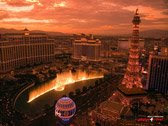Iran is located in the Middle East, bounded by Turkmenistan and the Caspian Sea, Afghanistan, Pakistan, the Persian Gulf, the Gulf of Oman, Iraq and Turkey. The centre and east of the country is largely barren desert with mountainous regions in the west. Tehran, the capital, is essentially a busy and modern city, but the best of the old has been preserved.As one of the first countries to be occupied by the early Islamic armies which came out of Arabia in the seventh century, Iran has a rich and detailed history. The antique sights of Persia, one of the greatest empires of the ancient world, can be witnessed alongside bustling metropolises and vast mountain ranges. Several bazaars are just as old and Iran is the destination for those in search of the most expensive rugs and carpets in the world. Iran has maintained a distinct cultural identity within the Islamic world by retaining its own language and adhering to the Shi'a interpretation of Islam. As a unique Islamic Republic, Iran is ruled by both supreme leaders and elected presidents.
Irpedia (Tourism Industry Association of Iran)Unit 9, 27 Khansari Alley, Somayyeh Street, Tehran, IranTel: (21) 8834 5269.Website:
http://www.irpedia.com/Embassy of the Islamic Republic of Iran in the UK16 Prince's Gate, London SW7 1PT, UK Tel: (020) 7225 3000. Website:
http://www.iran-embassy.org.uk/ Opening hours: Mon-Fri 0900-1700.Iranian Consulate in the UK50 Kensington Court, Kensington High Street, London W8 5DB, UK Tel: (020) 7937 5225. Website:
http://www.iran-embassy.org.uk/ Opening hours: Mon-Fri 0900-1230.Permanent Mission of the Islamic Republic of Iran to the United Nations622 Third Avenue, New York, NY 10017, USA Tel: (212) 687 2020. Website:
www.un.int/iranInterests Section of the Islamic Republic of Iran in the USAc/o The Embassy of Pakistan, 2209 Wisconsin Avenue, NW, Washington, DC 20007, USA Tel: (202) 965 4990. Website:
http://www.daftar.org/LocationMiddle East.TimeGMT + 3.5.Area1,648,043 sq km (636,313 sq miles).Population65.4 million (CIA estimate 2007).Population Density39.7 per sq km.CapitalTehran. Population: 7.2 million (UN estimate 2003).GeographyIran is located in the Middle East, bordered to the north by Turkmenistan and the Caspian Sea, the east by Afghanistan and Pakistan, the south by the Persian Gulf and the Gulf of Oman, and the west by Iraq and Turkey. The centre and east of the country are largely barren undulating desert, punctured by qanats (irrigation canals) and green oases, but there are mountainous regions in the west along the Turkish and Iraqi borders and in the north where the Elburz Mountains rise steeply from a fertile belt around the Caspian Sea.GovernmentIslamic Republic since 1979.Head of StateSupreme Leader (Rahbar-e Moazam) Ayatollah Ali Khameni since 1989.Head of GovernmentPresident Mahmoud Ahmadinejad since June 2005.Recent HistoryPresident Mahmoud Ahmadinejad was Tehran's ultra-conservative mayor before winning a run-off vote in elections in June 2005, becoming Iran's first non-cleric president for 24 years. The conservatives also won decisively in the general election of March 2008.Despite promising an administration of ‘peace and moderation', Iran has continued its nuclear programme. The president caused controversy early into his presidency over his comments that Israel should be ‘wiped off the map' and that the Holocaust was a ‘myth'.US president George W Bush declared Iran part of the ‘axis of evil' in 2002. Washington has accused Tehran of attempting to develop nuclear weapons and to sabotage US efforts in Iraq. Iran is building its first atomic power station with Russian help but it maintains that its nuclear ambitions are peaceful.LanguagePersian (Farsi) and Persian dialects are the most widely spoken language, used by 58% of the population. Turkic and Turkic dialects and Kurdish are also used. Arabic is spoken by 1% in Khuzestan in the southwest, and Turkish in the northwest around Tabriz. English, French and (to a lesser extent) German are spoken by many businesspeople and officials.ReligionOf the 98% Muslim population, 89% are Shi'a and 9% are Sunni. The remaining 2% consists of Christian, Jewish, Zoroastrian and Baha'i faiths.Electricity230 volts AC, 50Hz. Plugs are of the round two-pin type.Social ConventionsFeelings about certain countries (such as the USA and the UK) run high, so the visitor should avoid contentious subjects. The Westernisation of the Iranian way of life has been arrested since the fall of the Shah, and Koranic law exercises a much more traditional influence over much of the populace. In general, Western influences are now discouraged. Handshaking is customary, but not with members of the opposite sex. It must be remembered that intimate relations between non-Muslim men and Muslim women is illegal, and may incur imprisonment. Visitors should address hosts by their surname or title. Iranians are very hospitable and like to entertain. It is also customary to be offered tea, and guests are expected to accept such offers of hospitality. Because of Islamic customs, dress should be conservative and discreet, especially women’s. This has been especially enforced of late; women should cover their heads when in the public sphere, wear loose-fitted clothing, and ensure that their arms and legs are also concealed. Businesspeople are expected to wear a suit and more formal attire is also needed in smart dining rooms and for important social functions. During Ramadan, smoking, eating and drinking in public are prohibited between sunrise and sunset; however, facilities are always available in major hotels.

























